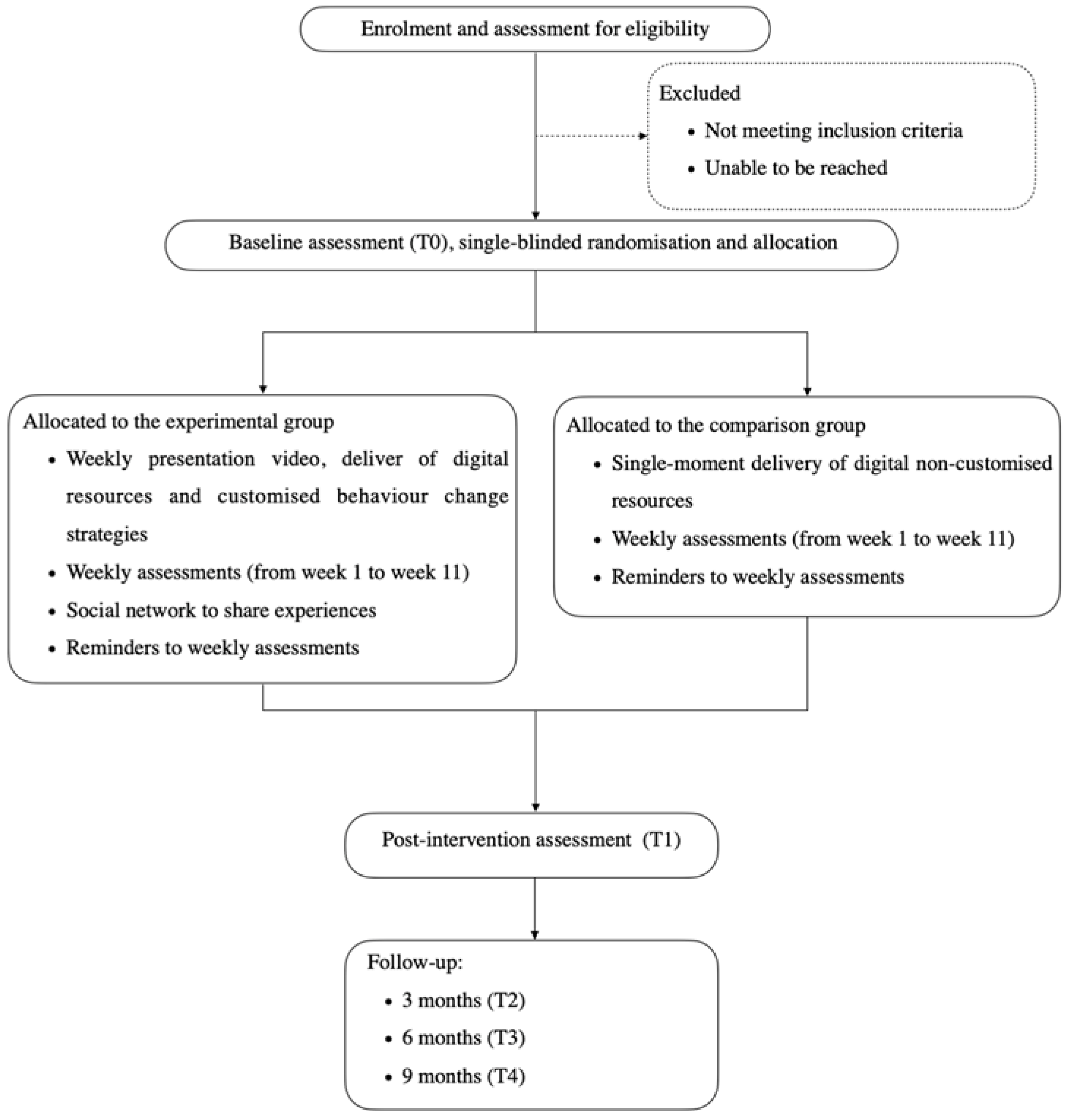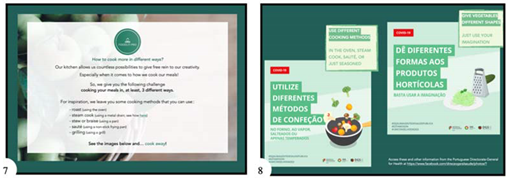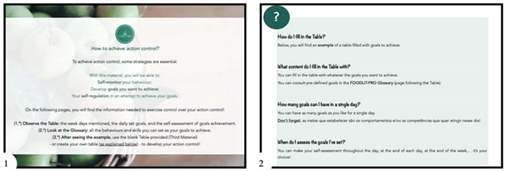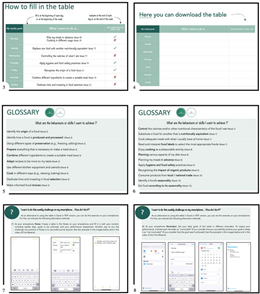FOODLIT-Trial: Protocol of a Randomised Controlled Digital Intervention to Promote Food Literacy and Sustainability Behaviours in Adults Using the Health Action Process Approach and the Behaviour Change Techniques Taxonomy during the COVID-19 Pandemic
Abstract
:1. Introduction
1.1. Food Literacy
1.2. Digital Interventions to Promote Behaviour Change
1.3. Study Objectives and Hypothesis
2. Methods and Analysis
2.1. Trial Design
2.2. Ethical Approval
2.3. Participants and Recruitment
2.4. Randomisation and Blinding
2.5. Intervention
2.5.1. Experimental Group
2.5.2. Comparison Group
2.6. Adherence and Strategies to Minimise Drop-Out
2.7. Outcomes
2.7.1. Primary Outcome Measure
2.7.2. Secondary Outcome Measure
3. Statistical Analyses
3.1. Randomisation Check, Drop-Out Analyses, and Intention to Treat
3.2. Hypotheses Tests for Intervention Effects
3.3. Examining Intervention Mechanisms
4. Dissemination Plan
5. Conclusions
Author Contributions
Funding
Institutional Review Board Statement
Data Availability Statement
Conflicts of Interest
References
- FAO; IFAD; UNICEF; WFP; WHO. The State of Food Security and Nutrition in the World 2019. In Safeguarding against Economic Slowdowns and Downturns; FAO: Rome, Italy, 2019. [Google Scholar]
- O’Hara, S.; Toussaint, E.C. Food access in crisis: Food security and COVID-19. Ecol. Econ. 2021, 180, 106859. [Google Scholar] [CrossRef]
- Willett, W.; Rockström, J.; Loken, B.; Springmann, M.; Lang, T.; Vermeulen, S.; Garnett, T.; Tilman, D.; DeClerck, F.; Wood, A.; et al. Food in the anthropocene: The EAT–Lancet Commission on healthy diets from sustainable food systems. Lancet 2019, 393, 447–492. [Google Scholar] [CrossRef]
- Rosas, R.; Pimenta, F.; Leal, I.; Schwarzer, R. FOODLIT-PRO: Food Literacy Domains, Influential Factors and Determinants—A Qualitative Study. Nutrients 2019, 12, 88. [Google Scholar] [CrossRef] [Green Version]
- Global Panel on Agriculture and Food Systems for Nutrition. Food Systems and Diets: Facing the Challenges of the 21st Century; Global Panel: London, UK, 2016. [Google Scholar]
- Ammar, A.; Brach, M.; Trabelsi, K.; Chtourou, H.; Boukhris, O.; Masmoudi, L.; Bouaziz, B.; Bentlage, E.; How, D.; Ahmed, M.; et al. On Behalf of the ECLB-COVID19 Consortium. Effects of COVID-19 Home Confinement on Eating Behaviour and Physical Activity: Results of the ECLB-COVID19 International Online Survey. Nutrients 2020, 12, 1583. [Google Scholar] [CrossRef]
- Springmann, M.; Godfray, H.C.J.; Rayner, M.; Scarborough, P. Analysis and Valuation of the Health and Climate Change Cobenefits of Dietary Change. Proc. Natl. Acad. Sci. USA 2016, 113, 4146–4151. [Google Scholar] [CrossRef] [Green Version]
- Tilman, D.; Clark, M. Global Diets Link Environmental Sustainability and Human Health. Nature 2014, 515, 518–522. [Google Scholar] [CrossRef]
- Tilman, D.; Clark, M.; Williams, D.R.; Kimmel, K.; Polasky, S.; Packer, C. Future Threats to Biodiversity and Pathways to Their Prevention. Nature 2017, 546, 73–81. [Google Scholar] [CrossRef]
- Foley, J.A.; DeFries, R.; Asner, G.P.; Barford, C.; Bonan, G.; Carpenter, S.R.; Chapin, F.S.; Coe, M.T.; Daily, G.C.; Gibbs, H.K.; et al. Global Consequences of Land Use. Science 2005, 309, 570–574. [Google Scholar] [CrossRef] [Green Version]
- Steffen, W.; Richardson, K.; Rockström, J.; Cornell, S.E.; Fetzer, I.; Bennett, E.M.; Biggs, R.; Carpenter, S.R.; de Vries, W.; de Wit, C.A.; et al. Planetary Boundaries: Guiding Human Development on a Changing Planet. Science 2015, 347, 1259855. [Google Scholar] [CrossRef] [Green Version]
- Vermeulen, S.J.; Campbell, B.M.; Ingram, J.S.I. Climate Change and Food Systems. Annu. Rev. Environ. Resour. 2012, 37, 195–222. [Google Scholar] [CrossRef] [Green Version]
- UN. General assembly A/RES/70/1. In Transforming Our World: The 2030 Agenda for Sustainable Development; UN: New York, NY, USA, 2015. [Google Scholar]
- UN. Member States Food Systems Summit Dialogue. In Description of the Inception Period; UN: New York, NY, USA, 2021. [Google Scholar]
- UN. Decade of Action in Nutrition. Available online: https://www.un.org/nutrition/about (accessed on 25 November 2021).
- Rosas, R.; Pimenta, F.; Leal, I.; Schwarzer, R. FOODLIT-PRO: Conceptual and empirical development of the Food Literacy Wheel. Int. J. Food Sci. Nutr. 2021, 72, 99–111. [Google Scholar] [CrossRef]
- Rosas, R.; Pimenta, F.; Leal, I.; Schwarzer, R. FOODLIT-Tool: Development and Validation of the Adaptable Food Literacy Tool towards Global Sustainability within Food Systems. Appetite 2022, 168, 105658. [Google Scholar] [CrossRef]
- Vidgen, H.A.; Gallegos, D. Defining Food Literacy and its Components. Appetite 2014, 76, 50–59. [Google Scholar] [CrossRef]
- Cullen, T.; Hatch, J.; Martin, W.; Higgins, J.W.; Sheppard, R. Food Literacy: Definition and Framework for Action. Can. J. Diet. Pract. Res. 2015, 76, 140–145. [Google Scholar] [CrossRef]
- Azevedo Perry, E.; Thomas, H.; Samra, H.R.; Edmonstone, S.; Davidson, L.; Faulkner, A.; Petermann, L.; Manafò, E.; Kirkpatrick, S.I. Identifying Attributes of Food Literacy: A scoping review. Public Health Nutr. 2017, 20, 2406–2415. [Google Scholar] [CrossRef] [Green Version]
- Slater, J.; Falkenberg, T.; Rutherford, J.; Colatruglio, S. Food Literacy Competencies: A Conceptual Framework for Youth Transitioning to Adulthood. Int. J. Consum. Stud. 2018, 42, 547–556. [Google Scholar] [CrossRef]
- Thomas, H.; Azevedo Perry, E.; Slack, J.; Samra, H.R.; Manowiec, E.; Petermann, L.; Manafò, E.; Kirkpatrick, S.I. Complexities in Conceptualizing and Measuring Food Literacy. J. Acad. Nutr. Diet. 2019, 119, 563–573. [Google Scholar] [CrossRef]
- Vettori, V.; Lorini, C.; Milani, C.; Bonaccorsi, G. Towards the Implementation of a Conceptual Framework of Food and Nutrition Literacy: Providing Healthy Eating for the Population. Int. J. Environ. Res. Public Health 2019, 16, 5041. [Google Scholar] [CrossRef] [Green Version]
- Rothman, R.L.; Housam, R.; Weiss, H.; Davis, D.; Gregory, R.; Gebretsadik, T.; Shintani, A.; Elasy, T.A. Patient Understanding of Food Labels: The Role of Literacy and Numeracy. Am. J. Prev. Med. 2006, 31, 391–398. [Google Scholar] [CrossRef]
- Rawl, R.; Kolasa, K.M.; Lee, J.; Whetstone, L.M. A Learn and Serve Nutrition Program: The Food Literacy Partners Program. J. Nutr. Educ. Behav. 2008, 40, 49–51. [Google Scholar] [CrossRef]
- West, E.G.; Lindberg, R.; Ball, K.; McNaughton, S.A. The Role of a Food Literacy Intervention in Promoting Food Security and Food Literacy—OzHarvest’s NEST Program. Nutrients 2020, 12, 2197. [Google Scholar] [CrossRef] [PubMed]
- Kelly, R.K.; Nash, R. Food Literacy Interventions in Elementary Schools: A Systematic Scoping Review. J. School Health 2021, 91, 660–669. [Google Scholar] [CrossRef] [PubMed]
- Thomas, H.M.; Irwin, J.D. Cook It Up! A Community-Based Cooking Program for at-Risk Youth: Overview of a Food Literacy Intervention. BMC Res. Notes 2011, 4, 495. [Google Scholar] [CrossRef] [PubMed] [Green Version]
- Truman, E.; Lane, D.; Elliott, C. Defining Food Literacy: A Scoping Review. Appetite 2017, 116, 365–371. [Google Scholar] [CrossRef] [PubMed]
- Powell, L.J.; Wittman, H. Farm to School in British Columbia: Mobilizing Food Literacy for Food Sovereignty. Agric. Hum. Values 2018, 35, 193–206. [Google Scholar] [CrossRef]
- Wickham, C.A.; Carbone, E.T. “Just Say It like It Is!” Use of a Community-Based Participatory Approach to Develop a Technology-Driven Food Literacy Program for Adolescents. Int. Q. Community Health Educ. 2018, 38, 83–97. [Google Scholar] [CrossRef] [PubMed]
- Brooks, N.; Begley, A. Adolescent Food Literacy Programmes: A Review of the Literature: Review of Adolescent Food Literacy Programmes. Nutr. Diet. 2014, 71, 158–171. [Google Scholar] [CrossRef]
- European Commission. Europeans Becoming Enthusiastic Users of Online Health Information. Available online: https://digital-strategy.ec.europa.eu/en/news/europeans-becoming-enthusiastic-users-online-health-information#:~:text=Six%20out%20of%20ten%20Europeans,aged%2055%20and%20over)%3B (accessed on 25 November 2021).
- Eurostat. Digital Economy and Society Statistics—Households and Individuals. Available online: https://ec.europa.eu/eurostat/statistics-explained/index.php?title=Digital_economy_and_society_statistics_-_households_and_individuals#Internet_usage (accessed on 25 November 2021).
- Hedin, B.; Katzeff, C.; Eriksson, E.; Pargman, D. A Systematic Review of Digital Behaviour Change Interventions for More Sustainable Food Consumption. Sustainability 2019, 11, 2638. [Google Scholar] [CrossRef] [Green Version]
- Yardley, L.; Choudhury, T.; Patrick, K.; Michie, S. Current Issues and Future Directions for Research into Digital Behavior Change Interventions. Am. J. Prev. Med. 2016, 51, 814–815. [Google Scholar] [CrossRef] [Green Version]
- Comber, R.; Thieme, A. Designing beyond Habit: Opening Space for Improved Recycling and Food Waste Behaviors through Processes of Persuasion, Social Influence and Aversive Affect. Pers. Ubiquitous Comput. 2013, 17, 1197–1210. [Google Scholar] [CrossRef]
- Woolley, E.; Garcia-Garcia, G.; Tseng, R.; Rahimifard, S. Manufacturing Resilience via Inventory Management for Domestic Food Waste. Procedia CIRP 2016, 40, 372–377. [Google Scholar] [CrossRef] [Green Version]
- Pohl, M.; Weißenböck, E.; Wauschek, S.G.R.; Kalleitner-Huber, M.; Mraz, G.; Bernhofer, G. Designing Cooling Stations for Food Sharing in Public Spaces. In 2017 Sustainable Internet and ICT for Sustainability (SustainIT); Institute of Electrical and Electronics Engineers: Funchal, Portugal, 2017; pp. 1–8. [Google Scholar] [CrossRef]
- Young, C.W.; Russell, S.V.; Robinson, C.A.; Chintakayala, P.K. Sustainable Retailing—Influencing Consumer Behaviour on Food Waste. Bus. Strateg. Environ. 2017, 27, 1–15. [Google Scholar] [CrossRef] [Green Version]
- Begley, A.; Gallegos, D.; Vidgen, H. Effectiveness of Australian Cooking Skill Interventions. Br. Food J. 2017, 119, 973–991. [Google Scholar] [CrossRef] [Green Version]
- Harrington, R.A.; Scarborough, P.; Hodgkins, C.; Raats, M.M.; Cowburn, G.; Dean, M.; Doherty, A.; Foster, C.; Juszczak, E.; Ni Mhurchu, C.; et al. A Pilot Randomized Controlled Trial of a Digital Intervention Aimed at Improving Food Purchasing Behavior: The Front-of-Pack Food Labels Impact on Consumer Choice Study. JMIR Form. Res. 2019, 3, e9910. [Google Scholar] [CrossRef] [PubMed]
- Reicks, M.; Kocher, M.; Reeder, J. Impact of Cooking and Home Food Preparation Interventions among Adults: A Systematic Review (2011–2016). J. Nutr. Educ. Behav. 2018, 50, 148–172. [Google Scholar] [CrossRef]
- dos Santos Chagas, C.M.; Melo, G.R.-S.; Botelho, R.B.A.; Toral, N. Effects of the Rango Cards Game Intervention on Food Consumption, Nutritional Knowledge and Self-Efficacy in the Adoption of Healthy Eating Practices of High School Students: A Cluster Randomised Controlled Trial. Public Health Nutr. 2020, 23, 2424–2433. [Google Scholar] [CrossRef] [PubMed]
- Serebrennikov, D.; Katare, B.; Kirkham, L.; Schmitt, S. Effect of Classroom Intervention on Student Food Selection and Plate Waste: Evidence from a Randomized Control Trial. PLoS ONE 2020, 15, e0226181. [Google Scholar] [CrossRef] [PubMed]
- Hutchesson, M.J.; Rollo, M.E.; Krukowski, R.; Ells, L.; Harvey, J.; Morgan, P.J.; Callister, R.; Plotnikoff, R.; Collins, C.E. EHealth Interventions for the Prevention and Treatment of Overweight and Obesity in Adults: A Systematic Review with Meta-Analysis: EHealth Interventions for Obesity in Adults. Obes. Rev. 2015, 16, 376–392. [Google Scholar] [CrossRef] [PubMed]
- Young, C.L.; Mohebbi, M.; Staudacher, H.; Berk, M.; Jacka, F.N.; O’Neil, A. Assessing the Feasibility of an M-Health Intervention for Changing Diet Quality and Mood in Individuals with Depression: The My Food & Mood Program. Int. Rev. Psychiatry 2021, 33, 266–279. [Google Scholar] [CrossRef] [PubMed]
- Wickham, C.A.; Carbone, E.T. What’s Technology Cooking up? A Systematic Review of the Use of Technology in Adolescent Food Literacy Programs. Appetite 2018, 125, 333–344. [Google Scholar] [CrossRef]
- Begley, A.; Paynter, E.; Butcher, L.; Dhaliwal, S. Effectiveness of an Adult Food Literacy Program. Nutrients 2019, 11, 797. [Google Scholar] [CrossRef] [PubMed] [Green Version]
- Begley, A.; Paynter, E.; Butcher, L.M.; Bobongie, V.; Dhaliwal, S.S. Identifying Participants Who Would Benefit the Most from an Adult Food-Literacy Program. Int. J. Environ. Res. Public Health 2019, 16, 1272. [Google Scholar] [CrossRef] [PubMed] [Green Version]
- Begley, A.; Paynter, E.; Butcher, L.; Bobongie, V.; Dhaliwal, S.S. Identifying Who Improves or Maintains Their Food Literacy Behaviours after Completing an Adult Program. Int. J. Environ. Res. Public Health 2020, 17, 4462. [Google Scholar] [CrossRef] [PubMed]
- Dumont, C.; Butcher, L.M.; Foulkes-Taylor, F.; Bird, A.; Begley, A. Effectiveness of Foodbank Western Australia’s Food Sensations® for Adults Food Literacy Program in Regional Australia. Int. J. Environ. Res. Public Health 2021, 18, 8920. [Google Scholar] [CrossRef]
- Schwarzer, R. Modeling Health Behavior Change: How to Predict and Modify the Adoption and Maintenance of Health Behaviors. Appl. Psychol. 2008, 57, 1–29. [Google Scholar] [CrossRef]
- Schwarzer, R.; Luszczynska, A. Health action process approach. In Predicting and Changing Health Behaviour: Research and Practice with Social Cognition Models, 3rd ed.; Conner, M., Norman, P., Eds.; Open University Press, McGraw-Hill: Maidenhead, UK, 2015; pp. 252–278. [Google Scholar]
- Michie, S.; Richardson, M.; Johnston, M.; Abraham, C.; Francis, J.; Hardeman, W.; Eccles, M.P.; Cane, J.; Wood, C.E. The Behavior Change Technique Taxonomy (v1) of 93 Hierarchically Clustered Techniques: Building an International Consensus for the Reporting of Behavior Change Interventions. Ann. Behav. Med. 2013, 46, 81–95. [Google Scholar] [CrossRef]
- Moher, D.; Hopewell, S.; Schulz, K.F.; Montori, V.; Gotzsche, P.C.; Devereaux, P.J.; Elbourne, D.; Egger, M.; Altman, D.G. CONSORT 2010 Explanation and Elaboration: Updated Guidelines for Reporting Parallel Group Randomised Trials. BMJ 2010, 340, c869. [Google Scholar] [CrossRef] [Green Version]
- Order of Portuguese Psychologists. Code of Ethics. Available online: https://www.ordemdospsicologos.pt/ficheiros/documentos/opp_cod_deontologico_web.pdf (accessed on 24 November 2021).
- Official Journal of the European Union. Regulation (EU) 2016/679 of the European Parliament and of the Council (General Data Protection Regulation). Available online: https://eur-lex.europa.eu/legal-content/EN/TXT/PDF/?uri=CELEX:32016R0679 (accessed on 24 November 2021).
- Sniehotta, F.F.; Scholz, U.; Schwarzer, R. Bridging the Intention–Behaviour Gap: Planning, Self-Efficacy, and Action Control in the Adoption and Maintenance of Physical Exercise. Psychol. Health 2005, 20, 143–160. [Google Scholar] [CrossRef]
- Graham, J.W. Missing Data Analysis: Making It Work in the Real World. Annu. Rev. Psychol. 2009, 60, 549–576. [Google Scholar] [CrossRef] [Green Version]
- Laborde, D.; Martin, W.; Swinnen, J.; Vos, R. COVID-19 Risks to Global Food Security. Science 2020, 369, 500–502. [Google Scholar] [CrossRef]
- The World Bank. GDP Growth (Annual %). Available online: https://data.worldbank.org/indicator/NY.GDP.MKTP.KD.ZG (accessed on 24 November 2021).

| Week | Framework | Instruments | Behaviour Change Techniques |
|---|---|---|---|
| Thematic | Variables or dimensions | Dimensions and/or items | BCTs title |
| Week 1 | HAPA | HAPA | Total: 3 BCTs |
| Pre-intenders | Action self-efficacy | Five items | (15.1) Verbal persuasion about capability |
| Risk perception | Three items | (5.1) Information about health consequences | |
| Outcome expectancies | Nine items | (9.3) Comparative imagining of future outcomes | |
| Week 2 | FLW | FOODLIT-Tool | Total: 2 BCTs |
| Origin and conservation | Choice and acquisition | Origin Items 17 and 18 | (4.1) Instruction on how to perform the behaviour |
| Preserve and analyse | Culinary competencies Item 10 | (4.1) Instruction on how to perform the behaviour (6.1) Demonstration of the behaviour | |
| Week 3 | FLW | FOODLIT-Tool | Total: 4 BCTs |
| Prepare and adapt | Cooking Skills | Culinary competencies Item 1 | (1.4) Action planning (4.1) Instruction on how to perform the behaviour (6.1) Demonstration of the behaviour |
| Item 2 | (4.1) Instruction on how to perform the behaviour | ||
| Item 3 | (15.1) Verbal persuasion about capability | ||
| Week 4 | FLW | FOODLIT-Tool | Total: 3 BCTs |
| Cooking | Cooking Skills | Culinary competencies Item 4 | (6.1) Demonstration of the behaviour |
| Item 8 | (1.1) Goal setting (behaviour) (4.1) Instruction on how to perform the behaviour (6.1) Demonstration of the behaviour | ||
| Week 5 | FLW | FOODLIT-Tool | Total: 1 BCT |
| Choice and selection | Choice and acquisition | Selection and planning Item 20 | (4.1) Instruction on how to perform the behaviour (in both items) |
| Item 21 | |||
| Week 6 | HAPA | HAPA | Total: 3 BCTs |
| Intenders | Maintenance self-efficacy | Six items | (15.3) Focus on past success |
| Action planning | Five items | (1.4) Action planning | |
| Coping planning | Six items | (1.2) Problem solving | |
| Week 7 | FLW | FOODLIT-Tool | Total: 3 BCTs |
| Nutrition and intake | Cooking Skills | Culinary competencies Item 5 | (6.1) Demonstration of the behaviour |
| Preserve and analyse | Selection and planning Item 16 | (2.4) Self-monitoring of outcome(s) of behaviour | |
| Choice and acquisition | Item 19 | (6.1) Demonstration of the behaviour | |
| Search and plan | Item 24 | (4.1) Instruction on how to perform the behaviour | |
| Week 8 | FLW | FOODLIT-Tool | Total: 4 BCTs |
| Planning and cooking pleasure | Cooking skills | Culinary competencies Item 9 | (5.6) Information about emotional consequences (10.4) Social reward |
| Search and plan | Selection and planning Item 25 | (4.1) Instruction on how to perform the behaviour (in both items) | |
| Item 26 | (6.1) Demonstration of the behaviour (in both items) | ||
| Week 9 | FLW | FOODLIT-Tool | Total: 2 BCTs |
| Hygiene and safety (within production and kitchen) | Preserve and analyse | Environmentally safe Item 11 | (4.1) Instruction on how to perform the behaviour (6.1) Demonstration of the behaviour |
| Production and quality Item 12 | (4.1) Instruction on how to perform the behaviour (in all items) (6.1) Demonstration of the behaviour (in all items) | ||
| Item 13 | |||
| Item 14 | |||
| Week 10 | FLW | FOODLIT-Tool | Total: 2 BCTs |
| Local and seasonal | Preserve and analyse | Environmentally safe Item 15 | (5.3) Information about social and environmental consequences |
| Search and plan | Item 22 | (4.1) Instruction on how to perform the behaviour (in both items) | |
| Item 23 | |||
| Week 11 | HAPA | HAPA | Total: 3 BCTs |
| Actors | Recovery self-efficacy | Three items | (8.7) Graded tasks |
| Action control | Six items | (1.6) Discrepancy between current behaviour and goal (2.3) Self-monitoring of behaviour |
| Week 4—Cooking |
|---|
| Customised infographics (A) and its associated tasks (B), reflecting the behaviour change and strategies applied. |
 |
| Corresponding items (C), to be responded to before the end of the week. Item 4 I use kitchen equipment and utensils (e.g., oven, blender) efficiently. Four-point Likert-type response scale (0—never; 1—sometimes; 2—frequently; 3—always). Item 8 I cook in different ways (e.g., stewing, baking). Four-point Likert-type response scale (0—never; 1—sometimes; 2—frequently; 3—always). |
| Week 11—Actors |
| Customised infographics (A) and its associated tasks (B), reflecting the behaviour change strategies applied. |
 |
 |
| Corresponding items (D), to be responded to before the end of the week. Recovery self-efficacy (three items) I believe that I could return to having a diet adequate to my needs, even if: (1) I had spent a few days without doing so. (2) I had spent many days without doing so. (3) I had spent a few weeks without doing it. Action control (six items) (1) I have evaluated regularly when, where and how I am making an adequate diet suited to my needs. (2) I have assessed my behaviour daily to check if I am having an adequate diet. (3) I am always aware of the diet that is adequate to my needs. (4) I have always in mind the intention to make a diet adequate to my needs. (5) I have worked hard to have a diet that meets my needs on a regular basis. (6) I have been making the effort to have an adequate diet as much as I intend to. |
Publisher’s Note: MDPI stays neutral with regard to jurisdictional claims in published maps and institutional affiliations. |
© 2022 by the authors. Licensee MDPI, Basel, Switzerland. This article is an open access article distributed under the terms and conditions of the Creative Commons Attribution (CC BY) license (https://creativecommons.org/licenses/by/4.0/).
Share and Cite
Rosas, R.; Pimenta, F.; Leal, I.; Schwarzer, R. FOODLIT-Trial: Protocol of a Randomised Controlled Digital Intervention to Promote Food Literacy and Sustainability Behaviours in Adults Using the Health Action Process Approach and the Behaviour Change Techniques Taxonomy during the COVID-19 Pandemic. Int. J. Environ. Res. Public Health 2022, 19, 3529. https://doi.org/10.3390/ijerph19063529
Rosas R, Pimenta F, Leal I, Schwarzer R. FOODLIT-Trial: Protocol of a Randomised Controlled Digital Intervention to Promote Food Literacy and Sustainability Behaviours in Adults Using the Health Action Process Approach and the Behaviour Change Techniques Taxonomy during the COVID-19 Pandemic. International Journal of Environmental Research and Public Health. 2022; 19(6):3529. https://doi.org/10.3390/ijerph19063529
Chicago/Turabian StyleRosas, Raquel, Filipa Pimenta, Isabel Leal, and Ralf Schwarzer. 2022. "FOODLIT-Trial: Protocol of a Randomised Controlled Digital Intervention to Promote Food Literacy and Sustainability Behaviours in Adults Using the Health Action Process Approach and the Behaviour Change Techniques Taxonomy during the COVID-19 Pandemic" International Journal of Environmental Research and Public Health 19, no. 6: 3529. https://doi.org/10.3390/ijerph19063529
APA StyleRosas, R., Pimenta, F., Leal, I., & Schwarzer, R. (2022). FOODLIT-Trial: Protocol of a Randomised Controlled Digital Intervention to Promote Food Literacy and Sustainability Behaviours in Adults Using the Health Action Process Approach and the Behaviour Change Techniques Taxonomy during the COVID-19 Pandemic. International Journal of Environmental Research and Public Health, 19(6), 3529. https://doi.org/10.3390/ijerph19063529







